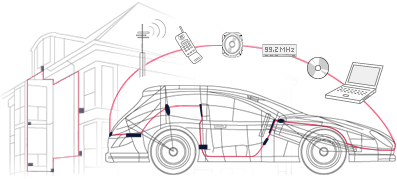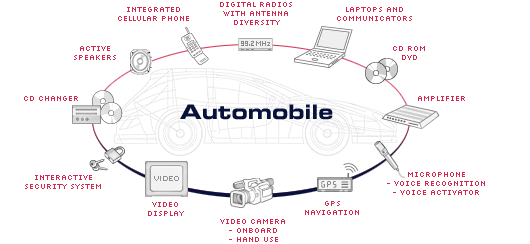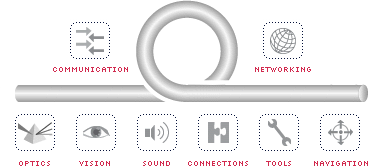MOST Optic Bus
MOST or Media Oriented Systems Transport, was developed in conjunction with DaimlerChrysler, Becker, BMW and Oasis beginning in 1997. It can be looked at as a successor of D2B even though D2B is an independent system will continue in other applications. With the ever increasing number of devices in vehicle, it is apparent that a new form of data transfer had to be developed to cope and MOST is the answer.

Automobiles have evolved from having a simple radio with perhaps a cassette or CD player to having a variety of sophisticated information systems that need to communicate and interact with each other and with a human user.
Cars today include GPS navigation systems that can work in conjunction with a security system to locate a stolen car. Car occupant safety requires the driver to concentrate on controlling the car rather than on the intricacies of the individual components. The car telephone needs to interact with the stereo system to mute it when a call is requested or received. Voice control and hands-free speakerphones require a microphone to digitise the voice. Display systems are needed for navigation information and DVD playback.
The motivation for the MOST technology comes from the requirement for a low cost, high speed multimedia peer to peer network, that would not need a PC or any other central intelligence to operate in order to be cost effective, flexible, reliable and future proof. The option of having optical media as the physical layer has always been one of the main considerations for design of the MOST network. The definition of multimedia includes everything from audio, video, telecommunications to data processing and control. One of the essential needs in such an environment is the support for true plug and play functionality (into and out of the network).

MOST Ring
To be effective all of these subsystems must interface with the car driver, present audio and visual information in a wide variety of formats to inform the driver and/or to entertain the passengers, and be able to manage the information to safely present it to the user as it comes from the various components.
The most efficient and cost effective way to continue the innovations in all these areas is to allow the devices to be developed independently and then be networked together using standard hardware and software interfaces. Digital interpretability will be required.
Options will be easy to add since the network provides the infrastructure to transfer information from one device to another. Cars will be customised to each buyer's preferences right at the dealership and will not depend on a preselected list. Safety will be enhanced as components have well defined interfaces to interoperate and are easily controlled from the user interfaces.

MOST Ideas
Media Oriented Systems Transport is a multimedia fibre-optic network optimised for automotive applications. It is a network developed by the automotive industry for the automotive industry. Its design allows it to provide a low-overhead and low-cost interface for the simplest of devices, such as microphones and speakers. At the same time, more intelligent devices can automatically determine the features and functions provided by all other devices on the network and establish sophisticated control mechanisms to take away distractions from the driver of the car as different subsystems try to communicate information to him.
The features of MOST make it suitable for any application, inside or outside the car that needs to network multimedia information along with data and control functions.
